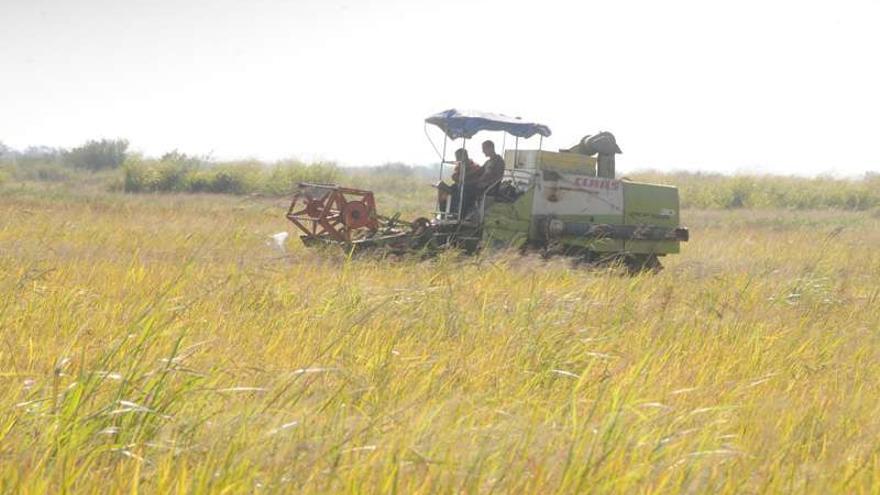
![]() 14ymedio, Havana, November 16, 2023 — The rice production in Artemisa is barely enough to cover the “basic family basket” sold in the ration stores of two municipalities, Candelaria and San Cristóbal, and a part of the provincial capital, the local authorities recognized on Thursday. Officials no longer know what to do to get the 1,500 tons of grain they need monthly, in a context of everyone for himself, where the State has asked each locality to redouble its “self-management.”
14ymedio, Havana, November 16, 2023 — The rice production in Artemisa is barely enough to cover the “basic family basket” sold in the ration stores of two municipalities, Candelaria and San Cristóbal, and a part of the provincial capital, the local authorities recognized on Thursday. Officials no longer know what to do to get the 1,500 tons of grain they need monthly, in a context of everyone for himself, where the State has asked each locality to redouble its “self-management.”
According to El Artemiseño, it is expected that the collection, this winter, of what was sown during the last spring season (2,470 acres), will be about 2,000 tons. That amount, which barely covers a month’s consumption, will not be enough to feed the 454,741 consumers in the province, who require about 18,000 tons per year.
The missing amount, the officials assure, will be imported, but the lack of resources and financing make purchases in the international market irregular and dependent on the state budget that, reduced as it is, uses all kinds of methods to try to raise national production.
Hence, the Agroindustrial Grain Company José Martí (EAIG), located in Candelaria, and Azutecnia – a branch of the Azcuba sugar group – have sent their workers out to “weed” 38 miles of irrigation channels in the rice fields.
At the moment, 15.5 miles have been cleared, Ariagny Pérez, director of EAIG, told the newspaper, and he said that several farmers in the area have joined the task of reconditioning the fields.
It is expected that the collection, this winter, of what was sown during the last spring season (2,470 acres), will be a scarce 2,000 tons
Of the 24,700 acres available for rice planting in the province, EAIG only has the capacity to attend to 7,000, said Pérez, who did not explain why only 17,300 were planted last spring when the company has the resources to cover seven times that amount.
In total, Cuba needs about 700,000 tons of rice per year for the population’s consumption and, although the aspiration for 2025 is that more than half that amount (538,000 tons) will be produced in the country, the reality is still the importation of what’s missing, and Artemis, with its low productive capacity, is far from contributing to that reality.
In recent months, the shortage of rice in the ration stores has been one of the most frequent complaints of the population. At the beginning of November, only three pounds of sugar per person per month had arrived in several municipalities of Havana, while the rest of the products – including rice – were conspicuous by their absence.
Several articles published in the official newspapers were quickly launched to ensure that everything was fine and that the delay in the rice delivery was due to the distribution problems that, between the lack of fuel and the heavy rains in the eastern provinces, had prevented unloading the grain from the ship that supposedly was waiting for better weather in the Bay of Havana to go to Santiago de Cuba.
The promises of the regime, however, did not calm the population, which attributed the lack of the grain to the State’s custom of achieving “the day-to-day.” Another article published this week in Vanguardia reported another “contingent” and “solidarity” measure: at the request of the Communist Party, that the rice farmers of Villa Clara, with long faces, donate the pounds of rationed rice which would ordinarily be their share to a care center.
Translated by Regina Anavy
____________
COLLABORATE WITH OUR WORK: The 14ymedio team is committed to practicing serious journalism that reflects Cuba’s reality in all its depth. Thank you for joining us on this long journey. We invite you to continue supporting us by becoming a member of 14ymedio now. Together we can continue transforming journalism in Cuba.
